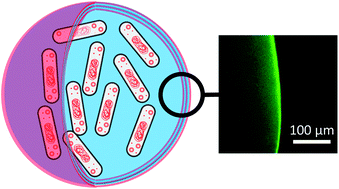Some years ago, I was a bit mystified as to the distinction
between prebiotics and probiotics.
These days, one can easily look them up on
Wikipedia, and find that prebiotics are meant to
encourage the growth of ‘good’ bacteria in the gut, while probiotics are supposed
to deliver the bacteria directly.
Prebiotics are generally soluble oligo- or
polysaccharides, known as dietary ‘fibre’, and one of the best sources of these
is chicory root.
 |
 |
|
Chicory root and flower The history of probiotics starts back in the 19th century with the work of Ilya Ilyich Mechnikov, who received the 1908 Nobel Prize in Physiology or Medicine for his discovery of phagocytes, along with Ehrlich (treatment of syphilis). Mechnikov’s theory, that certain white blood cells could engulf and destroy harmful bodies such as bacteria, met with scepticism from leading specialists including Louis Pasteur, Emil Adolf von Behring and others. At the time most bacteriologists believed that white blood cells ingested pathogens and then spread them further through the body. bacteria in the gut and that lactic acid could prolong life. Based on this theory, he drank sour milk every day. His book The Prolongation of Life: Optimistic Studies, along with his studies into the potential life-lengthening properties of lactic acid bacteria, inspired Japanese scientist Minoru Shirota to begin investigating the causal relationship between bacteria and good intestinal health, eventually leading to the development of a bacterial strain Lactobacillus casei strain shirota which from 1935 is the basis of (ヤクルト the Japanese name based on ‘yoghurt’: 养乐多 or 益力多 ‘benefit happiness/strength a lot’, depending on where you are in China.) — the big question — do the ‘good’ bacteria actually reach the gut? In order to reach the intestine, where they are needed, they have to pass the stomach with its very acidic gastric juice. Microencapsulation is widely used these days for delivering drugs (and lots of other things) so why not bacteria? There has been, much work on this, reviewed in The Gut Microbiota and Human Health with an Emphasis on the Use of Microencapsulated Bacterial Cells [1], which includes a Table of types of microcapsules available for the targeted delivery of probiotic bacteria. Three references there are given to complex capsules made of the two polymers alginate and chitosan, however there is some more recent research into developing multilayer systems. Again, the two main polymers are the same, namely Alginate, derived from seaweed, and Chitosan, derived from crustacean shells. |
|
|
|
|
|
Alginate |
Chitosan |
Although these are both polysaccharides, they
have significantly different properties which allow them to work better in
harmony when passing through the stomach. Alginate is in general a very good
encapsulator, but it does not protect the microbes sufficiently from gastric
juice. Chitosan, at first sight, seems to labour under two disadvantages. It
is a known antimicrobial agent and is yet is degraded by microbial action,
especially by the enzyme chitosanase. (Paradox? Maybe one is the solid form,
the other in solution). However, if the inner layer of the capsule is alginate,
chitosan is very slow to diffuse in to the microbes, while chitosan ionically
bound to the alginate is attacked much more slowly by the enzyme.

coating of alginate matrices with chitosan–alginate for the improved survival
and targeted delivery of probiotic bacteria after oral administration,
the problem is attacked by building a multilayer fortress around the bacteria.
The model probiotic, Bifidobacterium breve, were encapsulated
into an alginate matrix before coating in multilayers of alternating alginate
and chitosan. Bacteria encapsulated in different numbers of multilayers were
treated, and it was found that three layers of chitosan-alginate gave the
greatest survival. Of just over 1000,000,000 microbes* per millitre, more than
half survived after being soaked in model gastric fluid for the requisite time
(typically 2 hours), whereas unencapsulated bacteria were reduced to less than
1000 per ml.
* strictly speaking, colony-forming units
(CFU).
Bifidobacterium breve is commonly offered as a
probiotic supplement. The Wikipedia article
deals with the whole Bifidobacterium genus as a whole, but searching for
B. breve yields many results from people marketing probiotic
products, and as sources of information they might be biased, and generically
overlooking the problem of travel through the stomach. I doubt, though, if we
will see encapsulated bugs in ‘foodie’ products any day soon. But where someone
has a clinical condition involving imbalance of the intestinal microflora, this
might turn out to be a useful method of delivery.
So does this mean that
there is no point in consuming Yakult? That would depend on how directly the
bacteria were exposed to stomach fluid. The advice from one of the authors is
that the bacteria are most vulnerable when the stomach is empty and the pH is
low. So if you like Yakult, take it with
meals.
[1]
Journal of Biomedicine and Biotechnology; Volume 2011 (2011), Article ID 981214,
12 pages; doi:10.1155/2011/981214
Review Article: The Gut Microbiota and
Human Health with an Emphasis on the Use of Microencapsulated Bacterial Cells by
Satya Prakash, Catherine Tomaro-Duchesneau, Shyamali Saha, and Arielle
Cantor
[2] Journal of Materials Chemistry B, 2013, 1, 52: DOI:
10.1039/c2tb00126h
Layer-by-layer coating of alginate matrices with
chitosan–alginate for the improved survival and targeted delivery of probiotic
bacteria after oral administration
Michael T. Cook, George Tzortzis, Vitaliy
V. Khutoryanskiy and Dimitris Charalampopoulos
 Mechnikov also developed a theory that aging is caused by toxic
Mechnikov also developed a theory that aging is caused by toxic 



